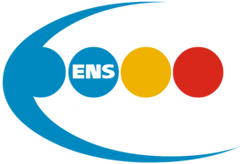How technology can support high quality care for residential communities & care homes
Technology in care settings can transform the way providers deliver services to residents and their families. Well implemented technology can enhance the high quality care you’re already offering, encourage greater independence and connect people to health professionals and services - improving residents’ quality of life.
1. Care technology empowers people
Technology in care gives people back control over their health, giving them their dignity, privacy and independence. They don’t need to be constantly monitored by staff, or frequently disturbed, when there are systems in place that are designed to monitor them quietly and unobtrusively in the background, alerting staff only when necessary.
Access to bedside consoles, touch screens and direct dial telephones empower residents to claim their independence, knowing that help, information and community are available at the touch of a button.
2. Enhances the treatments or care on offer
Technology can help support treatment and care plans and keep residents safe and secure. Sensors can monitor residents’ vital signs and their movements, reducing the risk of falling. Bedside touchscreens - for staff and resident use - ensure that important information is available at the touch of a button, and connect residents to on-site experts or remote monitoring centres. Door monitors and dementia light guidance systems work together to improve safety and security, while allowing residents to move freely and independently.
3. Provides communication between professionals and families
Technology provides peace of mind for families, including those who might not live close by. Touch screen consoles allow residents to video chat with loved ones and share photographs and other media, transforming the integration and socialisation of residents.
Also, the consoles allow staff to access third party databases and care notes, ensuring that medical information is shared and made available the moment it is needed.
4. Collects data and provides comparisons
Data management tools and reporting systems allow providers to collect regular data on residents’ health and wellbeing, and compare current data to previous months, helping monitor residents, tailor their care and respond to changes.
Reporting tools can also track staff, ensure that everyone is in the right place at the right time, and make reviewing staffing levels straightforward. For example, the Nursecall reporting database uses a staff lapel fob that continuously transmits a unique ID, which reports to the live database in real-time.
5. Helps to link people with services which are important to them
Wifi enabled touch screens in bedrooms not only connect residents to family, friends and the wider community, but also enables them to access important services. Visits to the hairdresser and to health-related services such as chiropodists and opticians can be easily booked and managed online, giving residents autonomy and independence.
6. Supports people to be more independent
With the right technology in place, residents can retain their independence both at home and outside. Wandering resident alert systems and fall monitoring allow people to have a good nights’ sleep without being unnecessarily disturbed, while still being kept safe.
Direct dial telephone systems and bedside touchscreens enable residents to access both staff and the outside world from the comfort of their own bed.
An added advantage is that digital technology doesn’t need to be left at the door when residents go out: they can stay safe and connected at all times.

